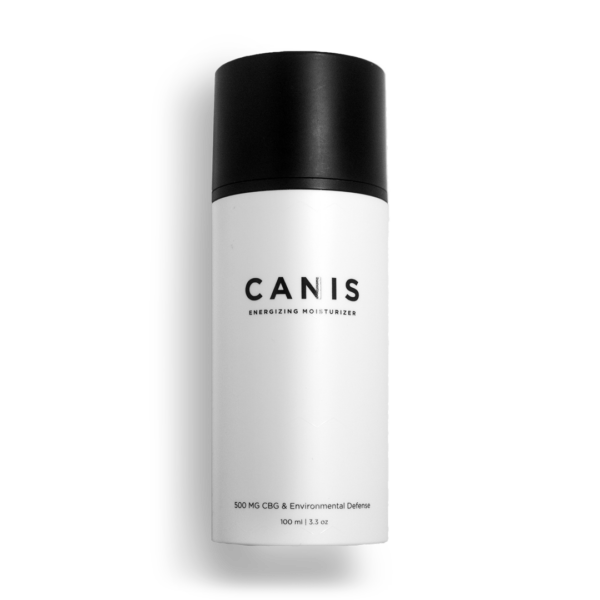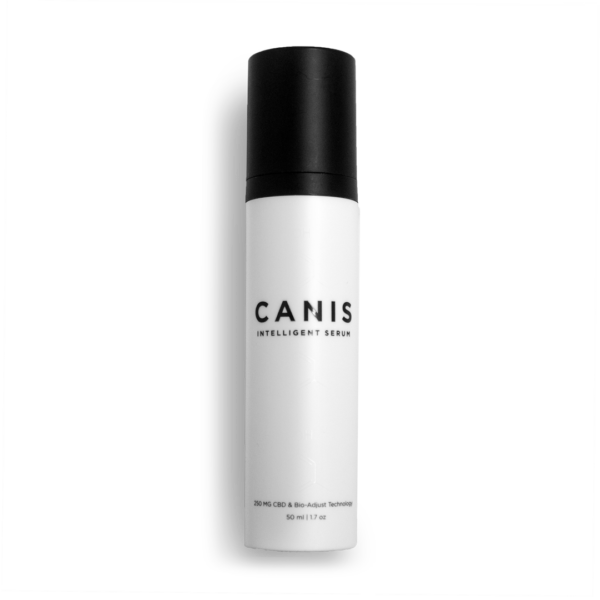Blog
CBD Cream For Pain Side Effects And More

The pros and cons of CBD cream are discussed in this post by Canis, which focuses on CBD cream and its use for joint pain management. Mainly, the CBD cream for pain side effects and more about CBD cream for pain.
CBD, or cannabidiol, is one of many compounds found in cannabis. It’s becoming increasingly popular as a natural treatment for a variety of issues, including anxiety, pain, and inflammation.
If you want to learn more, read our other blog post, things to note about using CBD oil for pain.
What is CBD cream?
The cannabis plant contains a variety of chemical compounds. THC, for example, is one of them, and it has been shown to produce a euphoric state when consumed. CBD, on the other hand, is not psychoactive. This means that it does not produce the “high” associated with THC.
CBD cream is a topical application of cannabidiol. It’s made by infusing CBD into an oil or cream base. The concentration of CBD in the product will vary, depending on the amount.
- CBD, another major component of the cannabis plant, does not produce this sensation.
- CBD has several health advantages, according to some people and academics.
- On a federal level, CBD is legal, but only in products with less than 0.3 percent THC.
Furthermore, each state has its own set of rules. Some jurisdictions demand a prescription, while others allow CBD as a supplement or even cosmetically.
There is a lot of anecdotal evidence that CBD can help with pain. Some say that it helps with conditions like arthritis, multiple sclerosis, and even cramps.
What exactly is hemp pain relief cream?
CBD hemp lotions and creams are generally produced by infusing high-quality cannabis flowers in a high-quality oil, usually coconut or olive oil, which extracts the active components, usually CBD, THC, or both.
This oil is then combined with other therapeutic oils, such as arnica or lemongrass essential oils, which are also supposed to alleviate pain. Here’s a rundown of the differences between THC, CBD, cannabis, and hemp.)
Is CBD legal in any way?
On the federal level, CBD products derived from hemp that have less than 0.3 percent THC are lawful, but they are still illegal in certain states. In some states, however, cannabis derived from CBD is legal. At the federal level, it’s illegal; but in certain jurisdictions, it’s permissible. Check your state and local laws before visiting.
It is important to remember that non-prescription CBD products have not been authorized by the Food and Drug Administration (FDA), which may be mislabeled.
The Food and Drug Administration (FDA) has approved a CBD drug to treat specific kinds of seizures. It hasn’t, however, given its approval for any use, including arthritis.
There is some evidence that CBD can help with pain, but it is inconclusive. More research needs to be done in order to say for certain.
CBD cream is a topical application of cannabidiol. It’s made by infusing CBD into an oil or cream base. The concentration of CBD in the product will vary on the effects and benefits.
The CBD is mixed with oil or butter in these lotions. Other topical pain relievers, such as capsaicin, may be included by firms that market these items to persons with arthritis.
Does CBD help with arthritis?
The anti-inflammatory and pain-relieving effects of CBD have been suggested in animal studies, but these benefits have yet to be proven in high-quality human research.
Some people with arthritis claim to have felt less pain and improved sleep after taking CBD. According to anecdotal evidence, some individuals suffering from arthritis who try CBD report reduced pain, better sleep, and lowered anxiety.
Drawbacks of CBD hemp creams for joints and muscles
When you add up all of the expenses and reduce CBD bioavailability via topicals—which have lower bioavailablity than both edibles/tinctures and vaping CBD—you get less CBD for more money.
This is generally true unless you are applying a therapy to your skin or a muscle or joint that is more responsive to that type of treatment. It’s difficult to dose CBD topicals correctly without a lot of trial and error, on a related note.
To summarise:
- More useful for skin and pain relief, less beneficial for mood and other issues
- Decreased bioavailability
- Difficult dosage calculation
- Costly
Side effects and risks of CBD cream
The attractiveness of CBD creams stems from the fact that studies show you can use them liberally without causing any damage. Just like with liquids, topicals must be applied and reapplied as necessary, but remember that topicals should only be used on the skin.
It’s also a good idea to keep it out of the reach of children and pets, just as you would with any other medicine. There are a lot of CBD goods on the market right now, so if you want to try an edible CBD product or provide your pet with CBD benefits, you’ll locate one that is perfectly tailored to your needs.
CBD treatments for dry, irritated skin may be beneficial; nevertheless, it is important to wait for any open wounds or open sores to heal before applying CBD cream to the skin.
As a rule, avoid using it on broken skin since it might irritate the region and cause your body’s natural healing processes to be slowed. CBD is a non-psychoactive cannabinoid found in cannabis. Some people, however, report drowsiness, digestive issues, and changes in appetite or weight after taking CBD.
However, when a topical CBD product, such as a CBD lotion, is used, these unfavorable effects are not nearly as severe as they would be if the medication was ingested.
Pain relief with CBD cream: CBD and the endocannabinoid system
The body creates endocannabinoids, which are cannabinoids. Endocannabinoids are neurotransmitters located in the body’s central nervous system that make up the endocannabinoid system.
The three types of receptors that can be found in the body are Pacemaker Receptors, G-protein coupled receptors (GPCRs), and enzyme-linked receptors. These cell-signaling pathways communicate with receptors throughout the body to assist various systems and organs stay in balance.
Cannabinoids can also reduce pain through the activation of endocannabinoid receptors. The inhibition of these receptors (particularly CB1) has been shown to relieve chronic pain in animal models.
The cannabinoids produced by cannabis hemp plants function similarly to the endocannabinoids in the body. CBN, for example, has a tight range of effects, while CBD has a wide scope of effects. One of the potential advantages of CBD is pain alleviation.
CBD adverse reactions
Cannabidiol (CBD) is a non-intoxicating component of the cannabis plant that has been gaining serious popularity as a treatment for various ailments. CBD is considered to be quite safe in moderate doses and should not produce severe effects.
However, because all medications have the potential to interact with one another and cause negative outcomes, some of the side effects of CBD include:
- Drowsiness or inattention
- Stomach problems such as diarrhea or nausea
- Irritability, sadness, or anger are common symptoms of depression
- CBD may also react with sedating medications such as alcohol and opioids
Because doctors have not discovered all drug interactions, consult a healthcare professional before using CBD in combination with other medicines.
Cannabis might also cause allergic reactions, just like other medications. People who are allergic to trees or nuts should be cautious when using CBD, as they may experience an allergic reaction. Researchers have yet to prove the long-term effects of CBD use, although it’s possible that continued usage will help you sleep better at night.
Conclusion
Despite the fact that CBD may help reduce arthritis pain and inflammation, further study is needed. CBD cream may be a good choice for individuals seeking to use a natural treatment for joint discomfort.
However, each case is unique, and what works for one person may not work for another.
Consult a doctor to figure out which natural and medical therapy options are most effective for arthritis alleviation.






